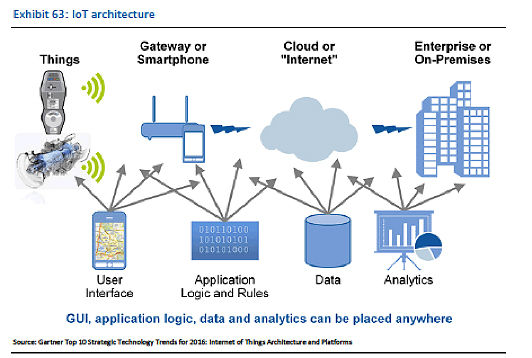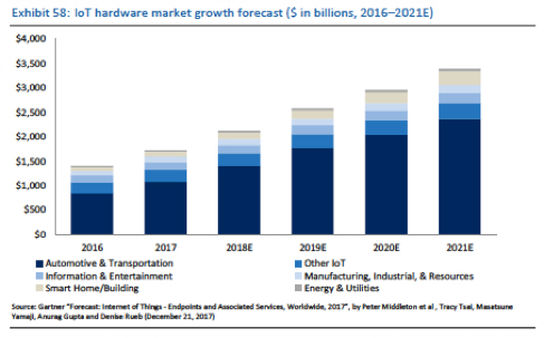This is a network of connected devices embedded with software, sensors and IP technology so they can interact with, and gather data, on their environment as part of a broader integrated system. The data collected is then transmitted over the internet and can be analyzed to improve performance, cost and operational efficiency.
With billions of devices expected to be connected by 2025, companies can’t afford to process and store this data in-house. But as more devices become connected, they need to be managed and continuously analyzed across large data systems. The Internet of Things (IoT) is driving data management from central storage towards the edge of the network, saving time, improving efficiency and preventing the need for overwhelming databases. IoT devices can also be linked so that several devices can be managed and upgraded remotely at the same time.

Software and component companies are best-placed to gain most from broader IoT adoption. Analytics software in particular will enable companies to gain real-time visibility into their business by making sense of the massive data collected from devices. And component companies that supply endpoint chips and sensors will also see robust growth as organizations look to gain a competitive advantage by making everyday objects “smart.”
Spend on Internet of Things hardware units is expected to be around $3.34 trillion by 2021 with automotive and transportation the largest markets.

In Cloud We Trust: Up close
The future will be determined by those who are willing to reinvest, adapt and turn future threats into opportunities.